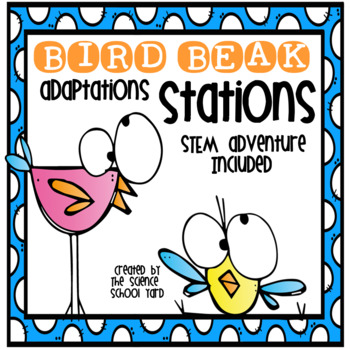
I love starting off this lesson by asking them to tell me what makes a bird a bird. We create an anchor chart that has a nest of great words including birds ... have 2 legs, have wings, have feathers, lay eggs, have beaks, fly, have two eyes.
I then share the book Beaks by Robin Brickman.
Beaks aren't just for eating...this book is great in showing other ways such as building, finding a mate, and digging to name a few!
I then take the first graders around from table to table to show them how they will be using their beaks to eat! I read the sheets to them, give them a check off list, but going in a circle from station to station is easy enough! I was able to get my supplies from the Dollar Store or from my classroom or home. There are seven stations in all! Here are just a few fun stations in action.
How fun to dig for worms! Wheat germ and gummy worms!
Time to crack open a sunflower seed!
Watch the woodpeckers as they dig for bugs! I use Mung beans because I had them, but rice or split peas work perfect, too! Grab the tweezers and a sponge and your all set!
My little hummingbirds love the nectar! Droppers, graduated cylinders and a little flower prop and we have a fast flying bird ready to eat!

When we are all done with the stations, because I only have an hour with my students, we finish up by having them create a bird that they saw in the book or they simulated in our stations. We add it to our anchor chart. If they get done nearly, I share with them a live eagle cam (yesterday we watched it eat a squirrel for lunch!) and compare it to a live bird cam from Cornell University!
Want to teach adaptations in a hands-on engaging way? Grab your set of Bird Beak Stations HERE!
After setting up all of the stations with supplies...I put them each in a baggie and they are all set for the next year!













